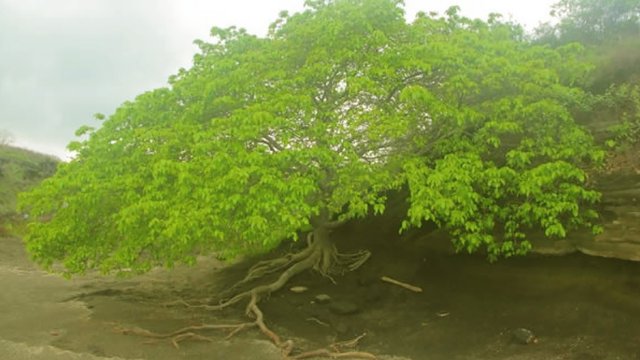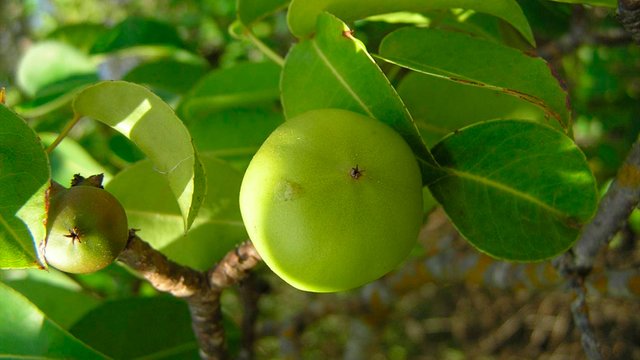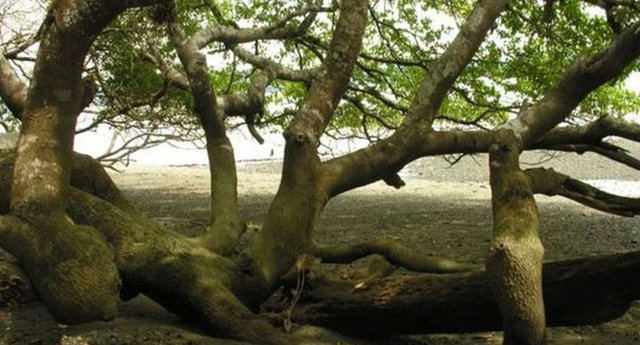
They say that when the conquerors arrived, several were intoxicated by eating its fruits.
They say that the indigenous people used the tree as punishment, tying the person to its trunk and leaving it there so that when it rained they would suffer.
They say that the natives also poisoned their arrows with their sap.
In fact, they say it was the reason for the death of the Spanish Juan Ponce de León, the first governor of Puerto Rico, who received a crush in a battle when he wanted to conquer the Florida coast in 1521.
That this has happened is difficult to verify, however, everything that is said about the tree of death is true.

The dreaded tree grows in idyllic landscapes and can reach imposing heights.
Its branches sometimes rest on the sand and invite you to rest on them. Or if they are high, they call you to protect yourself from the rain or the sun under their shade.
Its roots are buried in the sand and its trunks are sometimes the destination of the waves of the sea.
Its fruits, very similar to apples, are aromatic, sweet and tasty.
Yet it is one of the most untouchable species, and it has the dubious honor of being listed in the Guinness Book of Records as the most dangerous tree in the world.

-- As its name says
Hippomane mancinella.
That is its scientific name.
According to the Florida Institute of Food and Agricultural Sciences, Hippomane comes from the Greek words hippo, which means horse, and mane is derived from mania, or insanity.
The Greek philosopher Theophrastus (371 B.C.-287 B.C.) named a plant native to Greece after determining that horses went crazy after eating it. And the father of modern taxonomy, the Swede Carl Linnaeus, gave the noxious tree of America the same name.
More precisely, the native tree of Mesoamerica and the islands of the Caribbean Sea, which grows on the coasts from Florida, USA, to Colombia, and in some places it is marked with red crosses or warning plates.
Image copyright Thinkstock

Chamomile of death
That's one of their common names, the ones used by those who live with them.
It is also known as Manzanilla de la arena and Manzanilla de playa, although the tree of death is perhaps the name that best describes its reality.
Its milky sap contains the powerful irritant phorbol.
Just brushing past it can cause your skin to be horribly scalded.
Sheltering under its branches during a tropical rain shower can also be disastrous, as even diluted sap can cause an extreme skin rash.

Burning these trees is also a bad idea. Smoke can temporarily blind you and cause serious breathing problems.
But even though the effects are unpleasant, skin contact with this tropical tree is not fatal.
The real threat comes from its small round fruit, as eating it can cause vomiting and diarrhea so severe that it dehydrates the body to the point of no return.